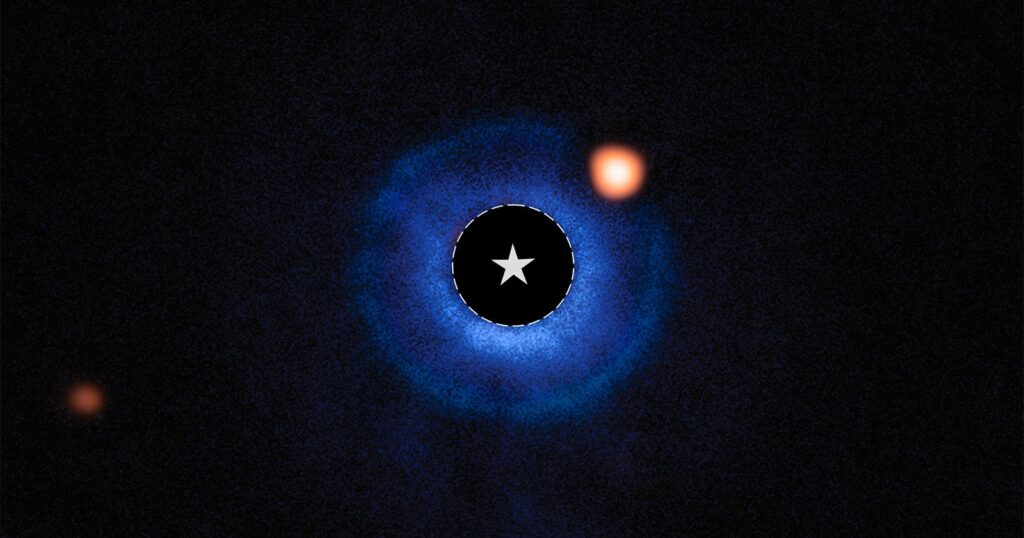
GREENBELT, Md. – NASA’s James Webb Space Telescope has achieved a groundbreaking milestone by capturing its first direct image of an exoplanet. This significant discovery, if confirmed, marks the first time the Webb Telescope has identified a planet through direct imaging, showcasing the lightest planet detected using this technique outside our solar system.
Breaking: Webb’s Historic Imaging Milestone
An international team of researchers utilized Webb’s Mid-Infrared Instrument (MIRI) to capture an image of TWA 7, a young star in close proximity to Earth. The team identified a planet-like object, TWA 7 b, orbiting the star with a mass comparable to Saturn, approximately 95 times that of Earth. This remarkable research was published this week in the journal Nature.
“Using MIRI’s coronagraph, the researchers carefully suppressed the bright glare of the host star to reveal faint nearby objects. This technique, called high-contrast imaging, enables astronomers to directly detect planets that would otherwise be lost in the overwhelming light from their host star,” NASA explains.
Immediate Impact and Key Details
Upon subtracting residual starlight through advanced imaging processing techniques, a faint infrared source was detected near TWA 7. After thorough investigation, the team ruled out the possibility of the object being within our solar system and deemed the chance of it being a background galaxy as “very small.”
“The evidence strongly points to the [infrared] source being a previously undiscovered planet,” NASA states.
Industry Response and Expert Analysis
The newly discovered infrared source is positioned within a gap in one of the three dust rings surrounding TWA 7. While previous ground-based observations have noted the star, Webb’s unique ability to block out starlight has allowed for the detection of faint nearby objects.
TWA 7 b’s characteristics, including its brightness, color, distance from the star, and position within the ring, align with theoretical predictions for a young, cold, Saturn-mass planet expected to be shaping the surrounding debris disk.
“Our observations reveal a strong candidate for a planet shaping the structure of the TWA 7 debris disk, and its position is exactly where we expected to find a planet of this mass,” explains Anne-Marie Lagrange, CNRS researcher at the Observatoire de Paris-PSL and Université Grenoble Alpes in France, and lead author of the research paper.
Background Context and Future Implications
This development builds on previous efforts to study planetary systems beyond our own. Webb’s ability to capture images of planets with masses similar to those in our solar system represents a significant advancement in understanding planetary formation and evolution.
“This observatory enables us to capture images of planets with masses similar to those in the solar system, which represents an exciting step forward in our understanding of planetary systems, including our own,” adds co-author Mathile Malin from Johns Hopkins University and the Space Telescope Science Institute (STScI) in Baltimore, Maryland.
The timing is particularly significant as astronomers continue to seek answers about the formation and development of distant worlds. The Webb Telescope’s capabilities are expected to lead to further discoveries, shedding light on the complexities of planetary systems.
Image credits: NASA, ESA, CSA, Anne-Marie Lagrange (CNRS, UGA), Mahdi Zamani (ESA/Webb)







